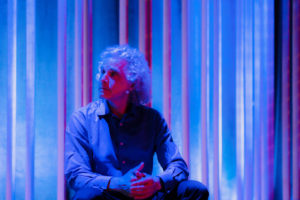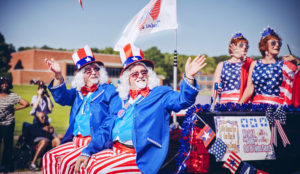If you listen to NPR or read The Atlantic, The New York Times and The Washington Post, you might think that Indians who live in the US, immigrants and their native-born children, are determined to impose the subcontinent’s caste system on North America. Perhaps you’ve read about the caste-based lawsuit aimed at Cisco Systems, or that top American universities are adding caste to their anti-discrimination policy.
It all makes for a rather disconcerting narrative. The only problem is that it’s almost certainly wrong. Yes, the Cisco lawsuit is newsworthy, but individual lawsuits do not establish generalised truths.
If you look at the fingerprints on many of these stories, much of the concern over America’s alleged caste system stems from a California-based non-profit called Equality Labs. Its Executive Director, Thenmozhi Soundararajan, is a Berkeley-educated daughter of a physician, who began her Dalit (the lowest caste) activism as a university student. Her 2018 report, and its horrifying findings, remain extensively quoted: for example, 25% of Dalit respondents said they had faced verbal or physical assault based on their caste; 50% of Dalits live in fear of their caste being outed; 67% reported being treated unfairly at their workplace. (The report also talks of “Caste apartheid”.)
The total sample size was 1,500, which is not a small number, and far superior to anecdotes. But the issue with the report has more to do with representativeness. The authors state that it was a “web-based, self-reported, self-administered questionnaire”, and that it was distributed “through direct contacts, community listservs, community organisations, immigrant organisations, South Asian religious, cultural, and linguistic networks, and social media”. The survey was written by “South Asian academics, anti-Caste activists, community members, and policy advocates”, and was endorsed by the Dalit American Coalition, the International Campaign for Dalit Humans Rights, and the Dalit American Women’s Association, among others. It also used “snowball sampling”, where respondents referred other respondents, resulting in a strong skew in demographics and views.
In short, this survey was likely completed by individuals already conscious of and concerned with prejudice and discrimination against Dalits in America. This does not invalidate the report, but it does suggest that its results may not be a good representation of Indian American experiences and views.
Several years after the Equality Labs survey, the Carnegie Foundation and YouGov collaborated on a report using a representative sample and came to different conclusions. While the Equality Labs sample was 24% Dalit, the Carnegie report found that 1% of Hindu Indian Americans who identified themselves with a caste were Dalit. This is in line with other private surveys I have seen, as well as the unrepresentative caste demographics of Indian Americans when compared to the subcontinent. While 22% of Hindus in India are “upper caste”, 80% of Hindus in America who identify with a caste — roughly half of all Indian Americans — are upper caste. Moreover, a quick perusal of a The New York Times wedding pages for a common Indian surname like Patel suggests that while 95% of Indian Hindu marriages are intra-caste, closer to 30% of US-born Indian marriages are intra-caste, and the true value is probably lower. In America, the melting pot is still operational.
The issue of endogamy is critical because the genetic data indicates that Indian castes, and in particular, subcastes or jati, have been strongly endogamous for 1,500 years in the subcontinent. While in the US racial differences between blacks and whites are organised around physical appearance, despite some average differences in looks between Indian castes even within a region, they are not striking enough to organise the communities.
Rather, castes operate genealogically as lineage and kinship networks that regulate marriage, uphold collective honour and distribute and control power and resources. There are Indian political parties whose vote banks are specific castes, and though there are some rarefied urban professional milieus where caste is marginal to their experience, it pervades the occupational, social and personal lives of the rural majority. Upper-caste groups tend to control disproportionate wealth and power, while lower-caste groups must make do with affirmative programs that reserve government jobs for their communities.
These inequalities in the subcontinent explain the demographics of Indian Americans, who are the most well-educated and wealthiest ethnic group in the US. Overwhelmingly still an immigrant community, Indian Americans have been able to migrate primarily due to their educational and professional qualifications, which means they will be drawn from the upper-caste elites of the subcontinent. Though fewer than 5% of Indians are Brahmin, private surveys indicate that 25% of Indian Americans are Brahmin. Dalits are 15% of India’s population, but they are no more than 1% of Indian Americans.
There are three different dynamics to consider when evaluating all these facts. First, it is possible and perhaps even likely that the small number of Dalits in the US experience some level of prejudice and discrimination. Second, Indian Americans belong to an overwhelmingly privileged caste in the subcontinent, but are still a racial minority in the US. They are 1.4% of the American population, of whom only 50% are Hindu. Dalits are 0.014% of the American population (1 out of 7,200).
Third, whereas in India it is possible that one’s friendship network could be limited to one’s subcaste, the Carnegie report finds that only 43% of immigrant Indian Americans even have mostly or all Indian friends, with the figure being 25% for those born in the US. 28% of US-born Indian Americans have almost no Indian friends, while 17% of foreign-born Indian Americans are in this category. Of those Indian Americans who are Hindu, 50% have almost no friends from the same caste as themselves. The fact that they can make this assessment indicates that caste is salient to them (most are immigrants), but their revealed preferences in friendship networks indicate that they do not self-segregate by caste.
America, then, is not India, and, contrary to some paranoid conspiracy theories, upper-caste Hindus do not call the shots in the US (no, Kamala Harris, whose mother is a Tamil Brahmin, is not very influential). Sundar Pichai and Satya Nadella are both upper-caste South Indians, but the workforce of Google and Microsoft are 50% non-Hispanic white. Though there are exceptions in Silicon Valley and at a few family-owned businesses (those glamorous motels!), Indian Americans’ workplaces are mostly dominated by non-Hispanic whites or are multiracial.
Since more than half of Indian Americans arrived after the turn of the millennium, they have brought many aspects of their culture to the US, some of which likely do include unpleasant attitudes around caste and jati that were nurtured on the subcontinent. But the social context of the US is entirely different to India; the reality is that the Indian communal dynamics do not and cannot apply.
Does this mean that Dalit Americans experience no discrimination or prejudice? Of course not. But there is a huge difference between India and the US in the pervasiveness of caste-based discrimination. America undoubtedly has many social ills relating to class and ethnicity, but this isn’t because India is importing its own problems to the US. The vast majority of Indians come to the US for a simple reason: to get rich, not to maintain caste hierarchy.
Disclaimer
Some of the posts we share are controversial and we do not necessarily agree with them in the whole extend. Sometimes we agree with the content or part of it but we do not agree with the narration or language. Nevertheless we find them somehow interesting, valuable and/or informative or we share them, because we strongly believe in freedom of speech, free press and journalism. We strongly encourage you to have a critical approach to all the content, do your own research and analysis to build your own opinion.
We would be glad to have your feedback.
Source: UnHerd Read the original article here: https://unherd.com




